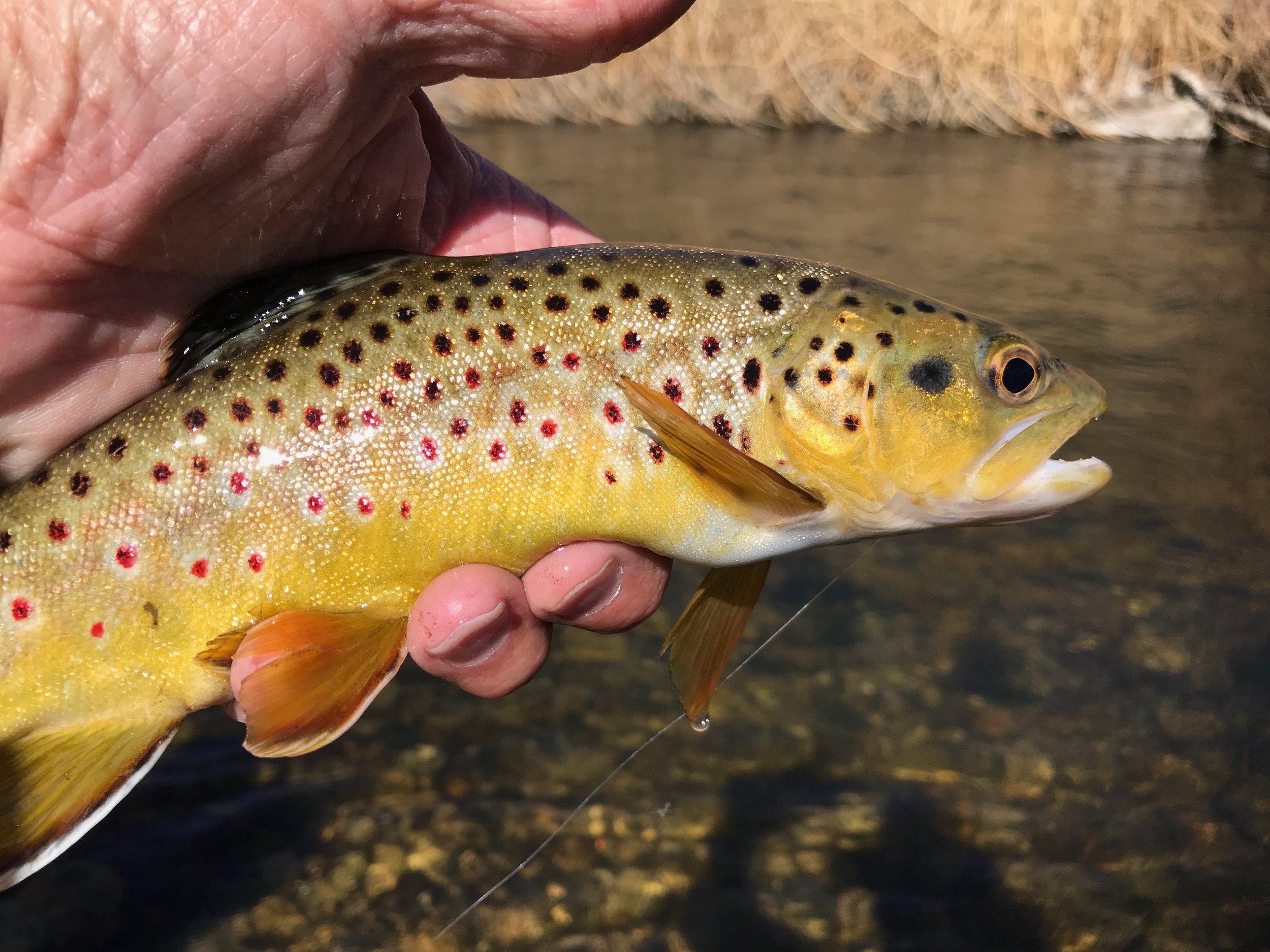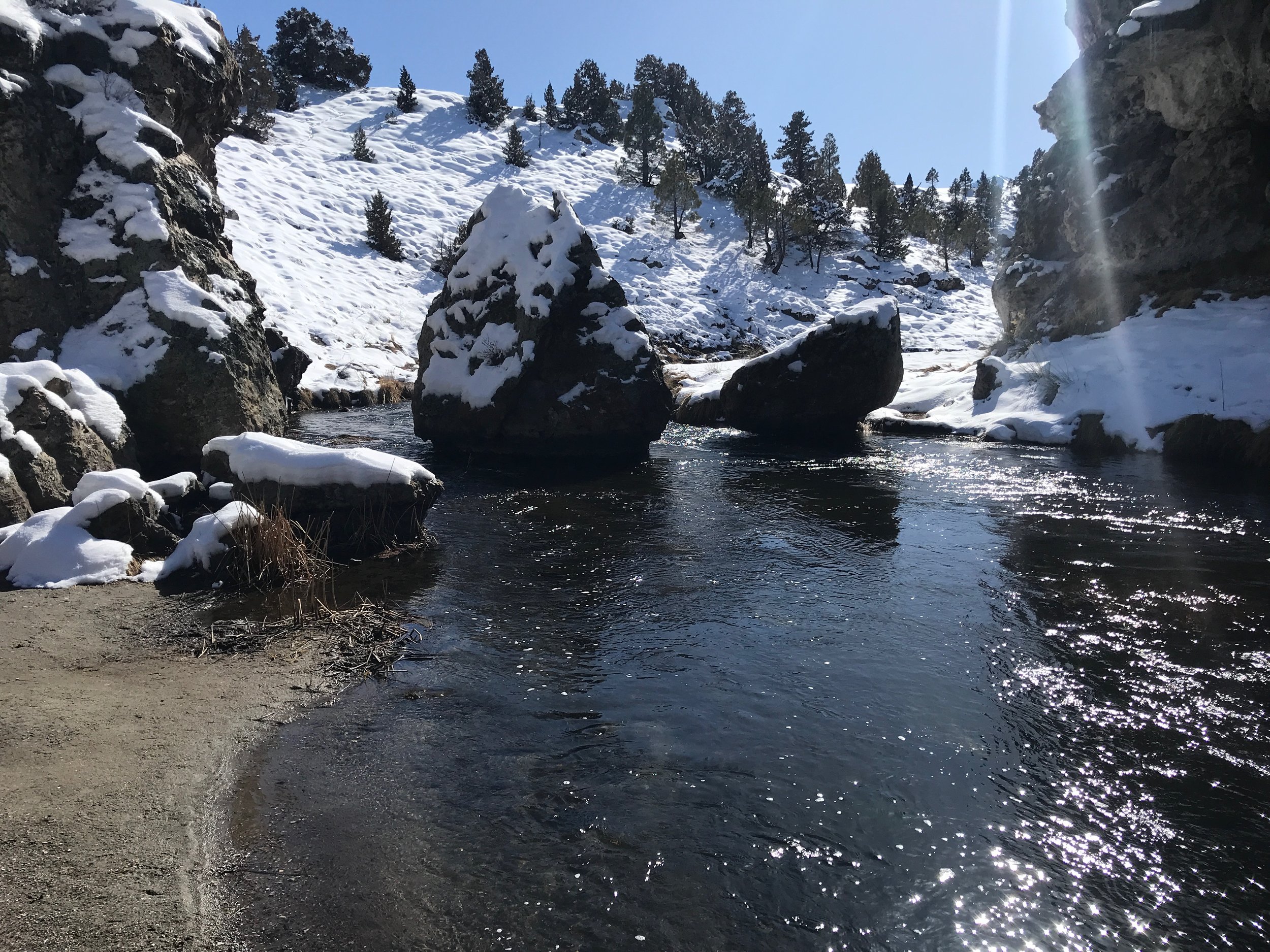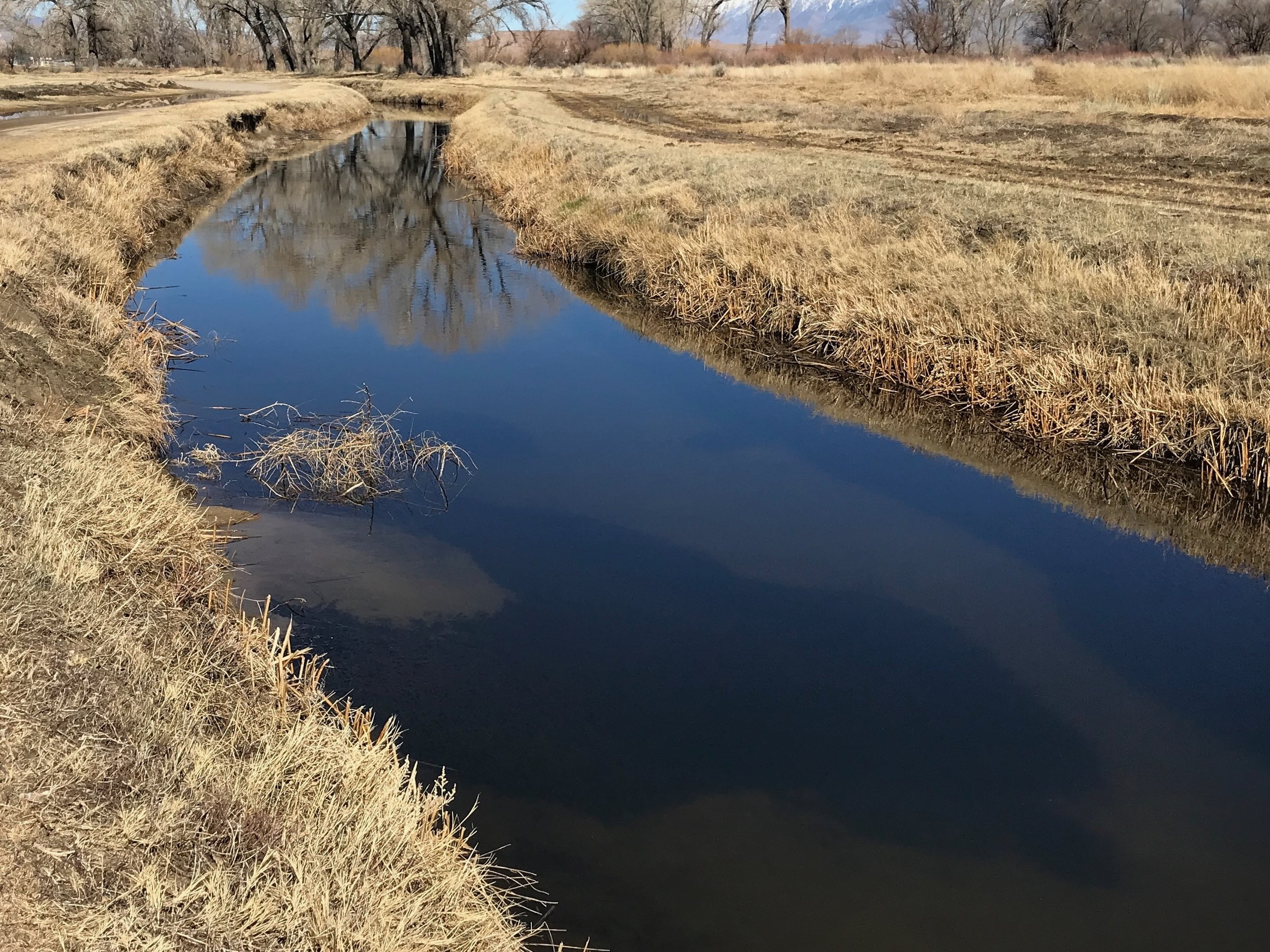The Eastern Sierra is expecting a major winter storm this weekend. Speculation is of high winds and lots of snow. For a few days it will be time to hunker down and stay indoors. Perfect time to tie flies, clean fly lines or organize fly fishing tackle. Once the storm blows through we should be back to clear skies and good fly fishing. Increased insect activity is increasing trout activity. Mid-day is prime time to be on the water as this is the peak of the insect activity provided by mayflies, midges and caddis. Nymphing continues to be the most productive method of fly fishing.
Wild brown trout are the most common trout species in the Eastern Sierra wild trout waters.
Lower Owens River
Wild Trout Section:
Warm days, hatching insects and feeding trout is why the lower Owens River was the spot to fish before the storm. I expect the fishing to pick right back up after the storm. The biggest problem of this storm is going to be the wind. Wading the river in spots where both banks are inundated with willows and tulles is a way to get out of the wind. Midges, mayflies and caddis are hatching and the trout are feeding on them. For dry flies fish with blue wing olive parachutes, Adams parachutes and olive sparkle duns. For nymphs use bead head flash back pheasant tail nymphs, hot spot pheasant tail nymphs and olive quilldigons.
Warm days and blue wing olive mayfly hatches makes the lower Owens River a great winter fly fishing spot.
Hot Creek
Interpretive Site:
This will be a spot that needs to be checked on to determine if you can access with vehicle or by foot after the storm. Wild brown trout and rainbow trout are feeding on caddis and mayflies. Nymphing is the most productive method as the hatches are not consistent enough to bring the trout to the surface consistently. Trout are taking olive quilldigons, hot spot pheasant tail nymphs, bead head flash back pheasant tail nymphs, gold ribbed hare’s ears and Frenchie’s. If you find consistent rising trout use Adams parachutes, blue wing olive parachutes and Griffiths gnats.
Time will tell if Hot Creek gets a little more snow or will be completely blanketed in snow.
Hot Creek
Canyon Section:
If we get the snow the weatherman are calling for fly fishers will be walking into the canyon section instead of driving in like they have been all winter. Skiers are heading over to Hot Creek to try the fly fishing or check out the hot springs in the afternoons. Mornings are quiet as few fly fishers are on the water. Dry and a dropper is a great way to fish the canyon section of Hot Creek. Use a size 16 elk hair caddis or an Adams parachute for the dry fly. For the nymph use olive burlap caddis, olive quilldigons, Frenchie’s, hot spot pheasant tail nymphs, bead head flash back pheasant tail nymphs, gold ribbed hare’s ears nymphs and cream caddis.
After this storm we maybe cross country skiing, snowshoeing or snowmobiling into the upper Owens River.
Upper Owens River
Above Benton Crossing Bridge:
This could be the end of vehicle access to the upper Owens River. It might be time to dust of the snowshoes, cross country skis or the snowmobile to access the river after this storm. The winter migration run of trophy rainbow trout is coming to an end. Fly fishers are working hard to get one or two trophy trout. Thoroughly covering the deep holes, deep runs and cutbanks with stoner nymphs, green/gold Prince nymphs and Richard’s gold ribbed hare’s ear variation is producing one to three trophy trout per session. Quite often fly fishers use what we call junk flies on the upper Owens River. These would be egg patterns, San Juan worms and squirmy worms.
Tough fly fishing continues on Bishop Creek Canal due to low clear water and spooky trout.
Bishop Creek Canal
Behind the Old Ford Dealer:
This might be the only water that could benefit from the storm short term. The water flows in the canal need to increase to allow fly fishers to fish the canal without spooking the trout. Fly fishing here continues to be tough as the water is clear and very low.





